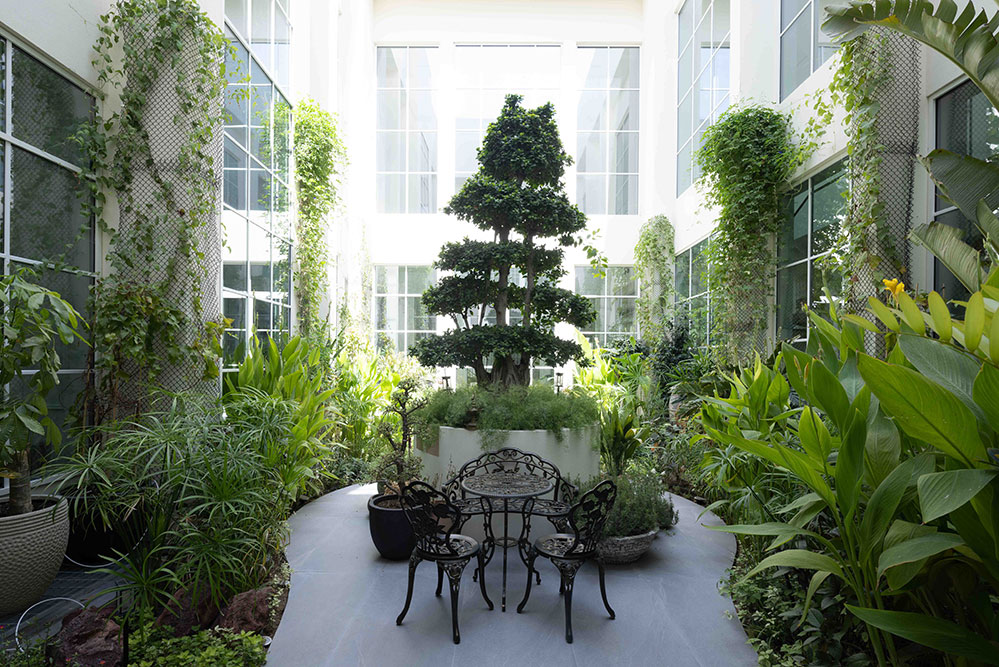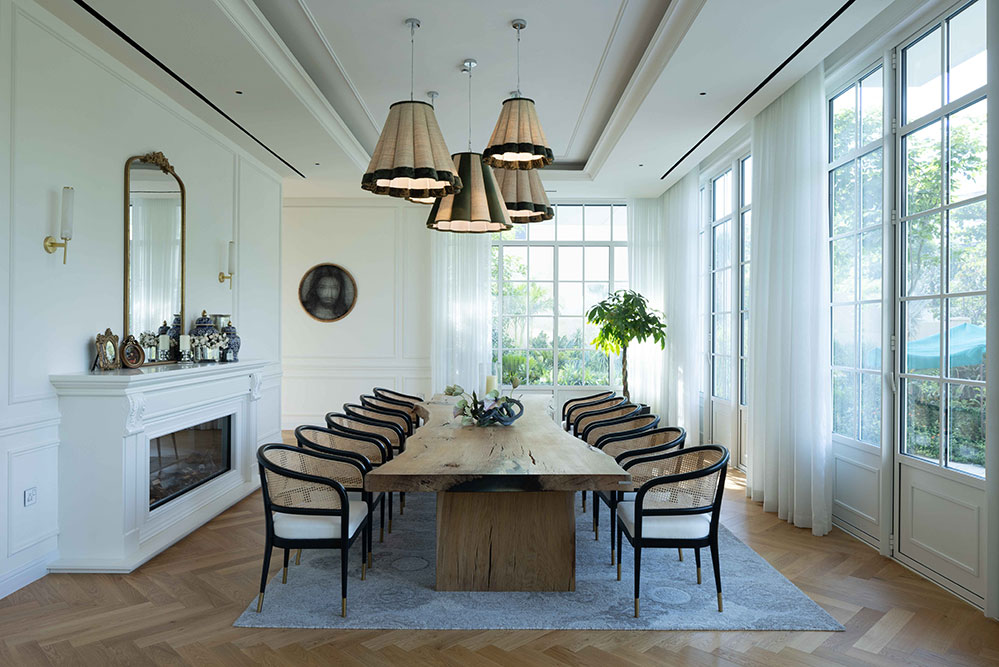How Vastu Shastra Is Shaping Modern Architectural Design?
Have you ever walked into a home and instantly felt at peace?
That feeling often comes from more than just good interiors. The way your space is planned, how light enters, how rooms are placed, and how energy flows affect your mood, sleep, and daily comfort.
That’s why more homeowners and architects are turning to Vastu Shastra, an ancient Indian design system that aligns homes with nature. Especially in places like Dubai, where cultural values and modern living go hand in hand, Vastu architecture is quietly making its way into contemporary spaces.
So, does Vastu Shastra really work?
For many, it isn’t just about belief, but it’s about creating homes that feel good to live in. This blog explores how Vastu is shaping modern architecture and why it matters.
What is Vastu Shastra, and Why Do People Still Follow it?
Vastu Shastra is an ancient architectural practice based on aligning spaces with natural forces like sunlight, wind, and gravity. It aims to create harmony between people and their environment. Though it originated centuries ago, its principles are surprisingly relevant today.
Here’s why people still consider Vastu design:
- It supports better light, air, and energy flow
- It promotes emotional calm and balance
- It helps with thoughtful space planning
- It creates homes that feel more alive and peaceful
Unlike trends that come and go, Vastu architecture focuses on never-changing human needs like comfort, clarity, and connection with nature.

Modern Homes Can Follow Vastu Without Looking Old-fashioned
A common myth is that Vastu Shastra only works for traditional homes. But that’s far from true. Today’s architects are blending Vastu principles with modern layouts.
Many homeowners now work with Vastu architects to design homes that look modern and still feel calm and balanced. Vastu isn’t just for traditional houses; it can easily be adapted to fit different types of homes and lifestyles. The focus is on thoughtful planning, natural flow, and creating spaces that feel good to live in.
The best part?
You don’t need a complete makeover. Even small, thoughtful shifts in layout or room placement can bring the benefits of Vastu into your everyday living.
How Does Vastu Affect the Way Your Space Feels Every Day?
The way your home is laid out has a quiet but powerful effect on your daily life. Vastu Shastra isn’t about superstition; it’s about creating spaces that support your well-being, both physically and emotionally.
When a home follows the Vastu design, the energy flows more naturally. You may not always see it, but you’ll definitely feel it.
Think about it:
- A bedroom facing the right direction can help you sleep more peacefully
- A well-placed kitchen can improve energy, digestion, and family harmony
- Natural light in the right areas can lift your mood and reduce stress
- A clear entrance can help bring in positive energy and new opportunities
Many people who follow Vastu in architecture say their homes feel calmer, more balanced, and easier to live in.
Key Vastu Principles that Architects Follow Today
Modern Vastu architects don’t just copy old rules; they adapt Vastu Shastra in smart, practical ways to suit your lifestyles.
Here are some of the core Vastu design principles that architects still integrate into modern designs:
Direction isn’t Just a Compass – It Carries Energy
In Vastu architecture, every direction is linked to a specific energy type. Architects use this to guide how spaces are arranged for comfort and balance.
- North and East: Linked to clarity, growth, and fresh beginnings. These sides are often kept open for windows or open spaces to invite sunlight and positive energy.
- Southwest: Associated with grounding and emotional stability. This is where more private spaces, like bedrooms or storage areas, are ideally placed.
- Southeast: Connected to fire and energy, making it a suitable zone for kitchens, where heat and transformation happen.
- Northwest: Tied to movement and change. Ideal for areas like guest rooms or bathrooms that don’t require long-term stillness.
Room Placement Supports Your Everyday Rhythm
How rooms are positioned can impact how the home feels and functions. It’s not just about looks, it’s about flow, comfort, and purpose.
- Bedrooms are often placed in the southwest to encourage rest, privacy, and emotional grounding.
- Bathrooms, which represent waste and cleansing, are placed in the west or northwest to keep heavy energy away from central living zones.
- Living rooms, where energy needs to stay light and social, are best positioned in the north or northeast, where natural light can uplift the space.

Open and Natural Flow Makes Homes Feel Better
Open layouts are popular, and Vastu Shastra architecture supports this idea. But it’s not just about knocking down walls, it’s about letting light, air, and movement flow without blockage.
- Avoid heavy furniture or clutter that blocks pathways or light sources.
- Keep walkways clear to allow energy to move freely through the home.
- If possible, leave the center of the home open or lightly furnished; it’s seen as the “heart” of the house and should feel open, not cramped.
The Entrance Sets the Tone for Everything
The main door is considered the mouth of energy in Vastu design. It’s where new energy, people, and opportunities enter your life.
- The best directions for entrances are north, northeast, or east. These are believed to bring in freshness and positivity.
- The doorway should be open, well-lit, and clutter-free. A clean, welcoming entry helps energy flow in easily and creates a calming first impression.
Balance the Five Elements through Design
Vastu works with the five natural elements, earth, water, fire, air, and space, and aims to keep them in harmony. This doesn’t mean you need all five physically present, but rather represented thoughtfully through design.
- Earth: Use grounding materials like wood, stone, or earthy colors in furniture and floors.
- Water: Add features like a small indoor fountain or shades of blue in selected areas.
- Fire: Include warm lighting, candles, or use the southeast zone for the kitchen.
- Air: Keep windows open when possible, use breezy fabrics, and allow good ventilation.
- Space: Keep some areas open, uncluttered, and breathable, especially the center of the home.
These Vastu design principles are not rigid instructions, they’re gentle guides to help build a home that feels balanced and natural. By blending these ideas with modern design, Vaastu architects help bring a subtle sense of harmony to everyday life.
Why Architects and Designers are Paying More Attention to Vastu?
More homeowners are looking for spaces that support their peace of mind, daily energy, and emotional comfort, not just impressive interiors. That shift is pushing architects and designers to rethink how they plan and place every part of a home.
Vastu Shastra offers practical design logic rooted in direction, space, light, and energy flow. For many professionals, it’s becoming a valuable tool, not for tradition’s sake, but because it helps them create homes that people actually feel good living in.
Architects are also finding that Vastu in architecture can be seamlessly combined with modern layouts. Whether it’s positioning a kitchen in the southeast or planning more open central spaces, these small yet thoughtful decisions often lead to homes that feel more natural and balanced.
Instead of treating Vastu as an add-on, many now see it as part of meaningful, intentional design.
Does Vastu Shastra Really Work or is it Just a Belief?
This is the most common question. And here’s a simple answer: for many people, it works.
Not in a magical way. But in the way a well-designed space supports sleep, calm, connection, and energy. Many homeowners report feeling better, having fewer arguments, or even noticing better health after aligning their homes with Vastu.
It’s less about superstition and more about intention. Thoughtful design has always had the power to change how we feel. Vastu simply gives structure to that idea.
You Don’t Have to Rebuild Your Home to Follow Vastu
One of the best things about Vastu is its flexibility. You don’t have to start from scratch. In fact, many people make small Vastu adjustments over time.
Simple ways to apply Vastu design:
- Move beds to face the recommended directions
- Use mirrors to enhance energy in specific rooms
- Bring in natural elements (plants, water features, earthy colors)
- Let sunlight into the northeast area
- Keep the home center open and clean
You can apply Vastu in any kind of home, even a rental apartment. It’s all about working with what you already have.
How Vastu Brings a Sense of Calm into Modern Architecture?
Well-being and design go hand in hand. As more people look for ways to live better, not just bigger, Vastu is becoming part of modern design conversations.

By adding a wellness-focused layer to home design, it’s helping architects create spaces that feel more peaceful and natural to live in. It’s shaping layouts in a way that supports daily well-being, whether that’s better sleep, more light, or simply a calmer atmosphere.
This approach is changing how homes are planned. What was once seen as traditional is now becoming a valuable part of modern architecture. And for many homeowners, that balance between design and well-being is exactly what they’ve been looking for.
Modern architecture doesn’t have to leave tradition behind. In fact, Vastu Shastra is showing us how the two can work beautifully together. It’s not about rules, it’s about creating spaces that feel right.
When you mix cultural wisdom with smart, modern design, you get more than just a good-looking home; you get one that feels calm, balanced, and truly lived in. And that’s what great architecture is really about. As an interior design company in Dubai, we believe in blending these principles to create spaces that reflect both tradition and innovation, ensuring every design is both functional and harmonious
FAQs
Q1. Does Vastu Shastra really work in modern homes?
The question “Does Vastu Shastra really work?” depends on one’s belief system. While it’s not scientifically proven, many homeowners claim improved energy, harmony, and well-being after aligning their spaces with Vastu principles.
Q2. How is Vastu used in architecture today?
Vastu in architecture today blends ancient Indian design principles with modern functionality. Architects incorporate Vastu guidelines in layouts and room placements to promote balance and positivity.
Q3. What is Vastu architecture, and how is it different?
Vastu architecture focuses on aligning structures with natural elements like sunlight, wind, and earth’s magnetic fields. Unlike conventional design, it emphasizes energy flow and directional harmony.
Q4. Can Vastu be applied to apartments and commercial buildings?
Yes, Vastu in architecture can be adapted for any space, including apartments and offices. While full compliance may not be possible, key elements like entrance direction and room function placement can still be aligned.
Q5. Is Vastu architecture relevant in modern city planning?
Absolutely. Vastu architecture is gaining renewed interest, even in urban projects. Many developers now consult Vastu experts to ensure that both aesthetics and energy alignment coexist in their designs.


